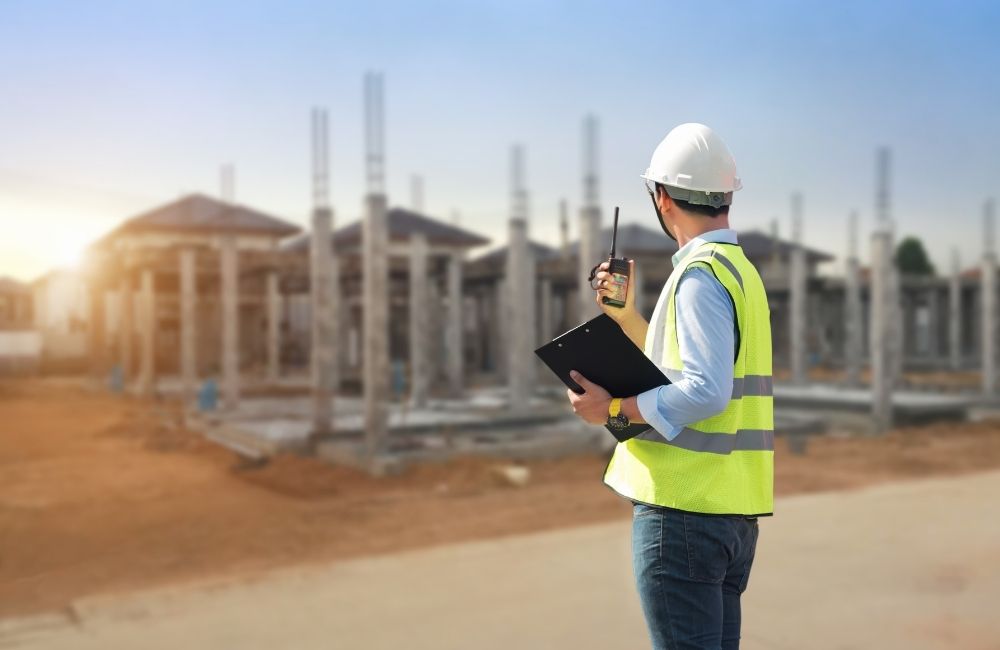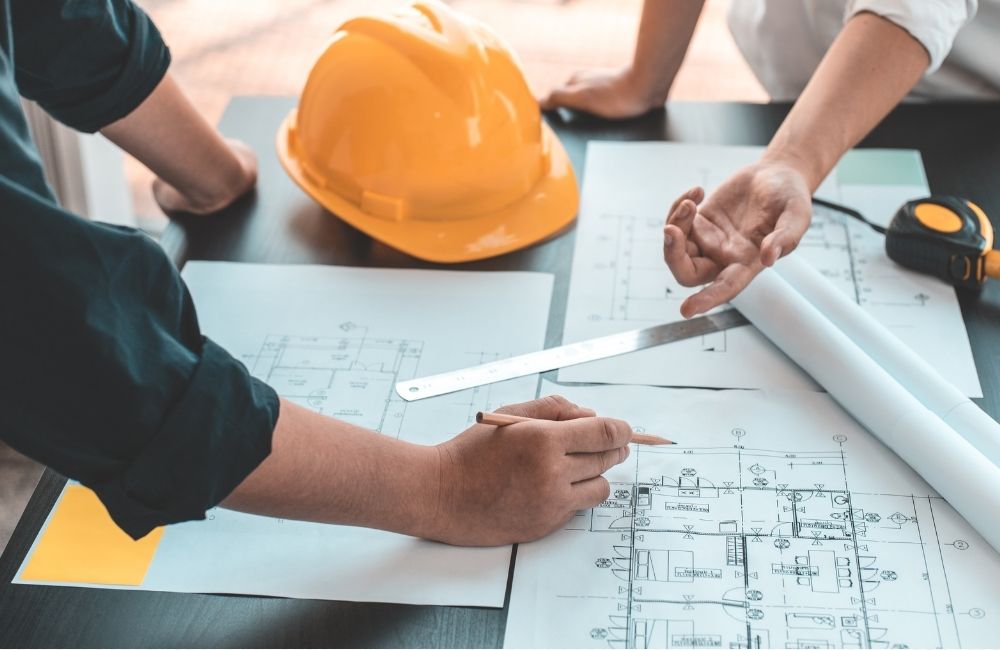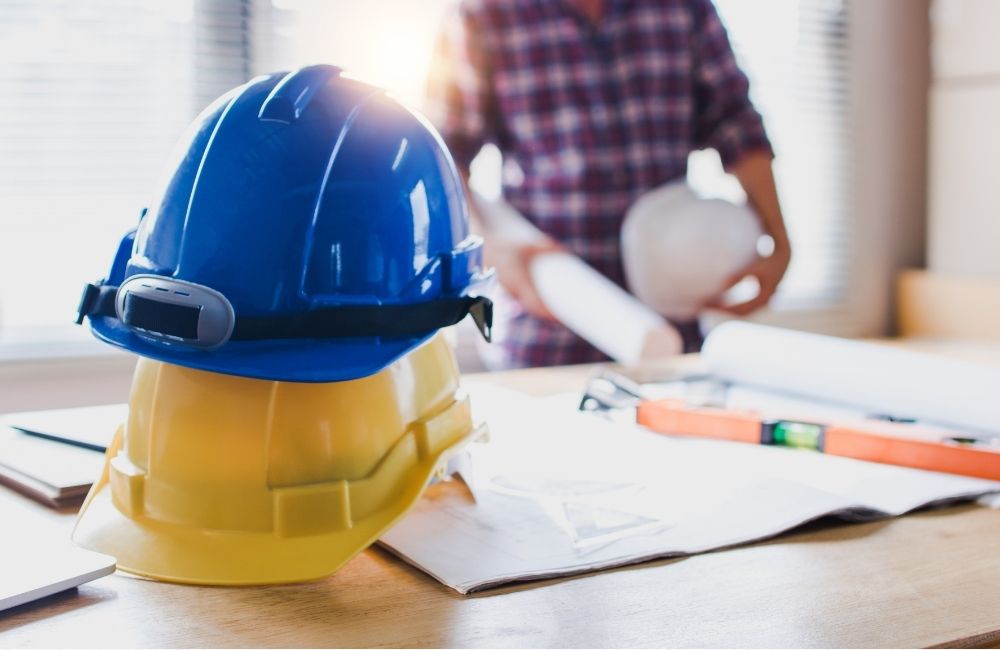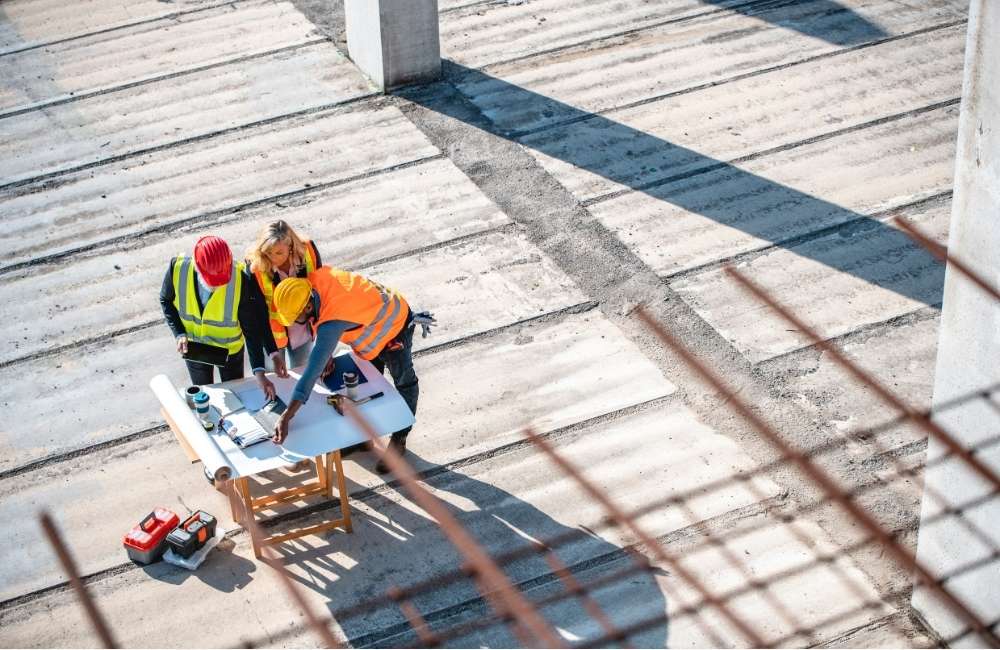Table of Contents
Key Takeaways
6 Innovative Methods to Improve Construction Safety
1. Implementing Real-Time Safety Monitoring Systems
2. Utilizing Drones for Site Inspections and Hazard Identification
3. Integrating VR and AR for Safety Training
4. Adopting Predictive Analytics for Risk Management
5. Implementing ‘Wearable’ Technology for Worker Safety Tracking
6. Utilizing Building Information Modeling (BIM) for Safety Planning
OSHA Training in Enhancing Construction Safety
Frequently Asked Questions
Partner with Claris Design•Build for Exceptional Safety and Quality!
Key Takeaways✔ Enhances immediate hazard detection and response through continuous site monitoring. ✔ Provides comprehensive site inspections and identifies hazards from aerial perspectives. ✔ Offers immersive and interactive training experiences, improving safety knowledge retention. ✔ Anticipates and mitigates potential risks using data-driven insights. ✔ Monitors workers' health and location in real-time, increasing overall safety. ✔ Improves safety planning by detecting potential hazards through digital modeling. ✔ Allows safe practice of emergency responses in realistic, simulated environments. |
The construction industry, with its inherent complexity and risks, places a critical emphasis on safety. Despite advancements in safety protocols, construction sites remain hazardous, with a death rate of 9.6 per 100,000 workers. However, advanced techniques are revolutionizing construction safety, significantly mitigating risks and creating safer work environments. Complementing these innovations, Occupational Safety and Health Administration (OSHA) training remains essential in reinforcing and enhancing these advanced safety measures.
6 Innovative Methods to Improve Construction Safety
Enhancing construction safety is crucial in mitigating risks and protecting workers. Here are six innovative methods to improve safety on construction sites:
1. Implementing Real-Time Safety Monitoring Systems
Real-time safety monitoring systems leverage sensors, cameras, and Internet of Things (IoT) devices to continuously monitor construction sites. These systems enable immediate detection of hazards, allowing for swift response and potentially preventing accidents before they occur.
Some key components of real-time safety monitoring systems include:
- Sensors: Detect environmental changes such as gas leaks or structural shifts.
- Cameras: Provide visual monitoring and surveillance.
- IoT Devices: Collect and transmit data for analysis.
2. Utilizing Drones for Site Inspections and Hazard Identification
Drones, or unmanned aerial vehicles (UAVs), have transformed construction site inspections. They offer aerial views, providing comprehensive site analysis and identifying potential hazards that might be missed from the ground.
- Enhanced Inspection Capability: Drones can access hard-to-reach areas.
- Real-Time Data: Immediate data collection and analysis.
- Safety: Reduces the need for human presence in dangerous locations.
3. Integrating VR and AR for Safety Training
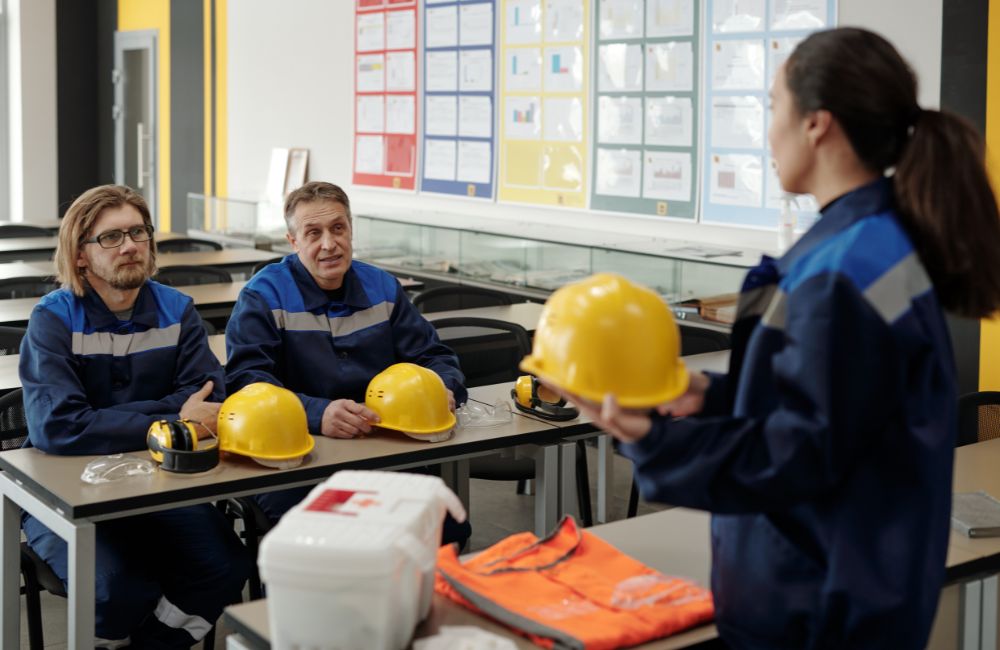
Augmented Reality (AR) and Virtual Reality (VR) are transforming safety training in construction by providing immersive and interactive experiences that surpass traditional methods. For instance, in construction, AR is used to simulate real-world scenarios, enhancing the effectiveness of safety training. Meanwhile, VR creates simulated environments that mimic real-life situations, offering a risk-free way to practice emergency responses.
Strategies for Implementation
To effectively integrate AR/VR into safety training, consider the following strategies for implementation:
- Develop Realistic Scenarios: Create VR/AR simulations that reflect potential site emergencies and specific tasks. Ensure the scenarios are comprehensive and relevant to the construction environment to maximize their practical value.
- Offer Training: Ensure that trainers are proficient in VR/AR technology by providing comprehensive training sessions that cover the use of VR/AR hardware, software, and troubleshooting techniques. Offer continuous learning opportunities through workshops, online courses, and hands-on practice to keep their skills sharp.
- Regular Updates: Keep VR/AR content up-to-date with the latest safety standards and regulations by establishing a routine review process. Collaborate with industry experts and regulatory bodies to identify changes and integrate them into the VR/AR training modules. Use software that allows easy updates and version control to ensure all trainees have access to the most current information.
- Custom AR Modules: Tailor AR experiences to specific site conditions and potential hazards. This customization helps in addressing the unique safety challenges of each construction site.
- Evaluate and Improve: Continuously assess the effectiveness of VR/AR training through feedback from trainees and performance data. Make necessary improvements to the training modules to enhance their effectiveness and relevance.
4. Adopting Predictive Analytics for Risk Management
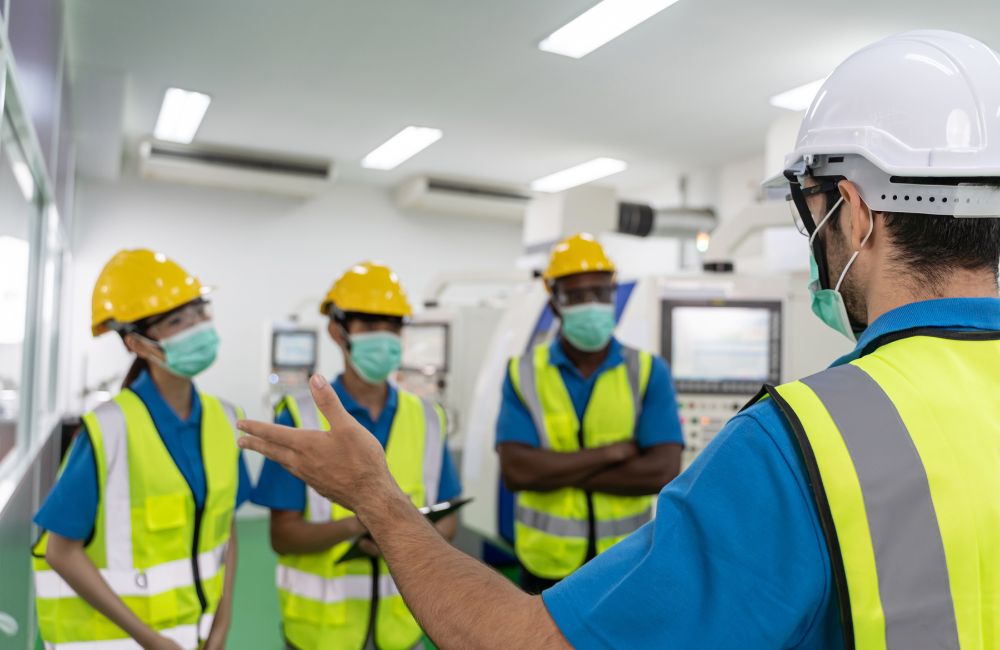
Predictive analytics involves using historical data, statistical algorithms, and machine learning techniques to predict future outcomes. In construction, this can be used to foresee and mitigate potential safety risks. The advantages of effective risk management include:
- Anticipation of Risks: By analyzing past accident reports and near-miss incidents, predictive analytics can identify patterns that precede falls from scaffolding. This allows construction managers to implement additional safety measures, such as enhanced training or physical barriers, in areas where these incidents are likely to occur.
- Data-Driven Decisions: Predictive models can analyze data on equipment failures to determine which types of machinery are most likely to cause accidents. Safety managers can then prioritize maintenance and safety checks on these machines, reducing the likelihood of accidents.
- Resource Optimization: By predicting which construction phases and locations are most prone to safety risks, predictive analytics can help allocate safety officers, first-aid stations, and emergency response teams more efficiently. For instance, if a model predicts a high risk of electrical hazards during the final wiring phase, additional electricians with safety training can be assigned to oversee the process and mitigate risks.
Implementation Process
To successfully adopt predictive analytics for construction safety, follow these key steps:
- Data Collection: Gather extensive historical data on past incidents, near-misses, equipment failures, and safety inspections. This data should be collected before, during, and after construction to ensure a comprehensive understanding of safety risks throughout all phases of the project.
- Algorithm Development: Develop algorithms using statistical methods and machine learning techniques to analyze the collected data and predict potential safety risks. This step is crucial before and during construction to anticipate and mitigate risks proactively. Collaborate with data scientists and safety experts to ensure the accuracy and relevance of the models.
- Integration: Embed predictive analytics into existing safety management systems. This includes setting up dashboards for real-time monitoring, alert systems for imminent risks, and integrating with other project management tools to streamline safety processes. Integration should be continuous, adapting to data collected during and after construction to improve safety outcomes.
5. Implementing ‘Wearable’ Technology for Worker Safety Tracking

Wearable technology includes devices like smart helmets, vests, and watches that track workers' health metrics and locations in real-time. These devices are becoming essential tools for enhancing safety on construction sites.
Implementing wearable technology can help in:
- Real-Time Monitoring: Tracks vital signs and physical conditions.
- Location Tracking: Monitors workers' positions to ensure they are in safe zones.
- Immediate Alerts: Sends alerts in case of health anomalies or accidents.
Practical Implementation
For effective integration of wearable technology in construction safety, ensure workers are comfortable and understand how to use the devices. In addition, consider the following steps:
Choose the Right Devices
Select wearables that suit the specific needs of the site, such as smart helmets, safety vests, and glasses.
- Smart Helmets: Equipped with sensors to detect impact, monitor worker health, and provide real-time data on environmental conditions such as temperature and gas levels.
- Safety Vests: Integrated with GPS and RFID technology to track worker location, monitor vital signs, and send alerts in case of emergencies.
- Smart Glasses: Provide augmented reality displays for hands-free access to blueprints, safety protocols, and real-time hazard alerts, enhancing situational awareness and communication.
Data Management
Implement systems to collect, analyze, and act on data generated from worker health and safety, equipment performance, and site conditions. Collect data on vital signs, fatigue levels, machinery usage, and environmental factors like temperature and noise. Analyzing this data helps predict equipment failures, schedule maintenance, monitor worker health, and ensure safe site conditions.
6. Utilizing Building Information Modeling (BIM) for Safety Planning
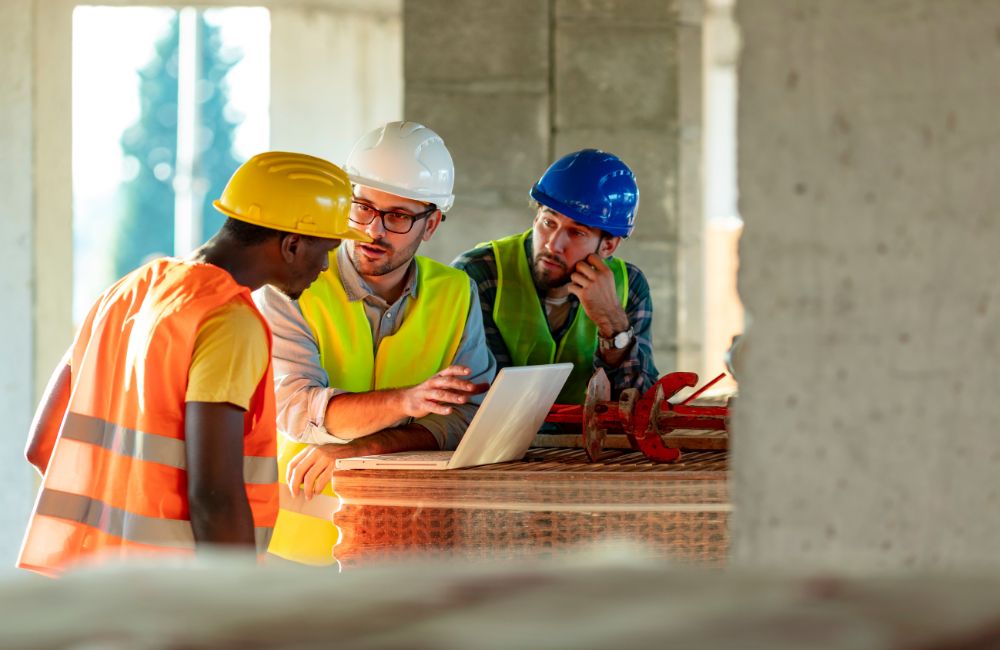
Building Information Modeling (BIM) is a digital representation of a facility's physical and functional characteristics, used in construction for various purposes, including safety planning. BIM technology significantly enhances construction safety by automating the detection of potential hazards and preventing possible risks.
BIM can also aid in the following:
- Enhanced Visualization: Provides a detailed visual representation of the construction site.
- Improved Collaboration: Facilitates communication among stakeholders through shared digital models, virtual meetings, and real-time updates, ensuring everyone is informed and aligned on safety protocols and site conditions
Steps for Effective BIM Integration
To successfully integrate Building Information Modeling (BIM) for safety planning, follow these strategies:
- Develop Detailed Models: Create comprehensive BIM models that include detailed representations of the construction site, incorporating safety elements such as hazard zones, emergency exits, and safety equipment location.
- Collaborate with Stakeholders: Engage all project stakeholders in the BIM process.
- Regular Updates: Keep BIM models updated with any changes in the project.
OSHA Training in Enhancing Construction Safety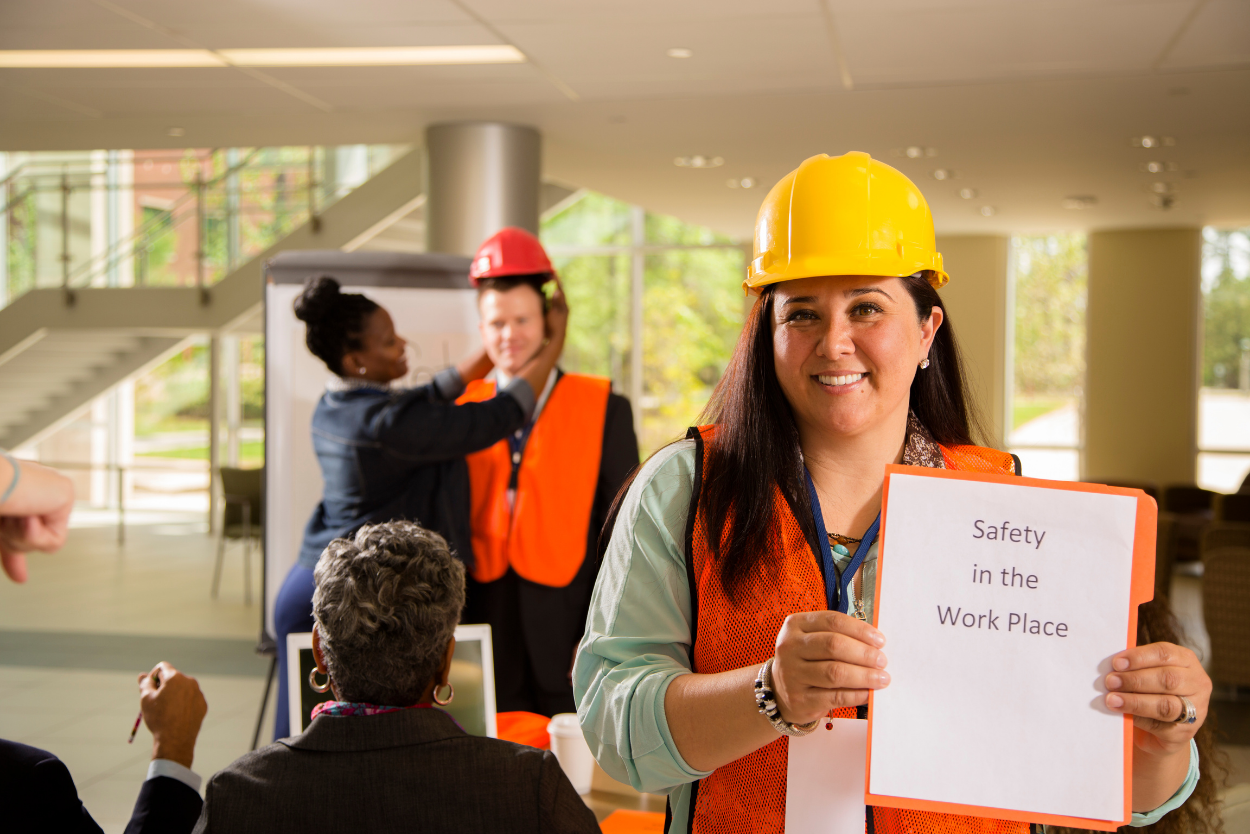
Ensuring workplace safety is paramount for any organization, with employers responsible for providing a safe environment for their employees. A thorough understanding of job-related hazards and risks is essential, and one of the key tools for this is Occupational Safety and Health Administration (OSHA) training.
The OSHA, a federal agency, sets and enforces workplace safety regulations. OSHA training educates both employees and employers on identifying and mitigating potential hazards in the workplace. This is especially critical in construction, which accounts for 21% of all worker deaths in the U.S.
Why is OSHA Crucial
OSHA safeguards over 130 million employees across diverse industries in the U.S., from construction to healthcare. Beyond ensuring workplace safety, OSHA leads to improved employee productivity, reduced absenteeism, increased profitability, and decreased legal risks.
By setting and enforcing safety standards and conducting inspections, OSHA helps identify and mitigate potential hazards before they cause harm, thereby playing a critical role in workplace safety. Compliance with OSHA regulations also helps employers avoid costly fines and penalties, improving overall productivity and morale.
Benefits of OSHA Training
Since its inception, OSHA has significantly reduced workplace fatalities and empowered workers to report safety violations and participate in developing safety programs. In fact, over the past 50 years, OSHA, alongside employers and safety advocates, has significantly improved workplace safety. Worker deaths in America have decreased from about 38 per day in 1970 to 15 per day in 2022.
- Legal Safeguards: Employers with OSHA training are better protected against legal claims related to workplace accidents, demonstrating their commitment to safety.
- Emergency Response: Trains workers to handle emergencies effectively, minimizing the impact of accidents.
- Enhanced Public Health and Business Benefits: Improves workplace safety, reduces costs, boosts productivity, elevates employee morale, and supports social responsibility goals.
- Regulatory Compliance: Ensures adherence to safety standards, avoiding legal issues and fines.
- Protection for Whistleblowers: Safeguards employees who report safety violations, allowing them to do so without fear of retaliation.
- Hazard Awareness: Educates workers on potential dangers, enhancing their ability to avoid risky situations.
- Safety Standards Enforcement: OSHA enforces safety guidelines through inspections and penalties, ensuring a safe work environment.
Frequently Asked Questions
What are the most common construction site hazards?
Common construction site hazards include falls from heights, slips and trips, struck-by and caught-in/between accidents, as well as electrical hazards. Falls are the leading cause of injuries and fatalities, often resulting from inadequate fall protection or unsafe working conditions. Proper training, safety equipment, and adherence to safety protocols can mitigate these risks.
How can construction workers prevent falls?
Preventing falls involves using appropriate fall protection systems, such as guardrails, safety nets, and personal fall arrest systems. Workers should receive training on how to use fall protection equipment correctly and recognize fall hazards. Regular inspection and maintenance of fall protection gear ensure it remains effective.
What are the key components of a construction site emergency response plan?
A construction site emergency response plan includes procedures for identifying and responding to various emergencies, such as fires, medical incidents, and natural disasters. Key components include emergency contact information, evacuation routes, and designated assembly points. Regular drills and training ensure that workers are familiar with the plan and can respond effectively in an emergency.
Partner with Claris Design•Build for Exceptional Safety and Quality!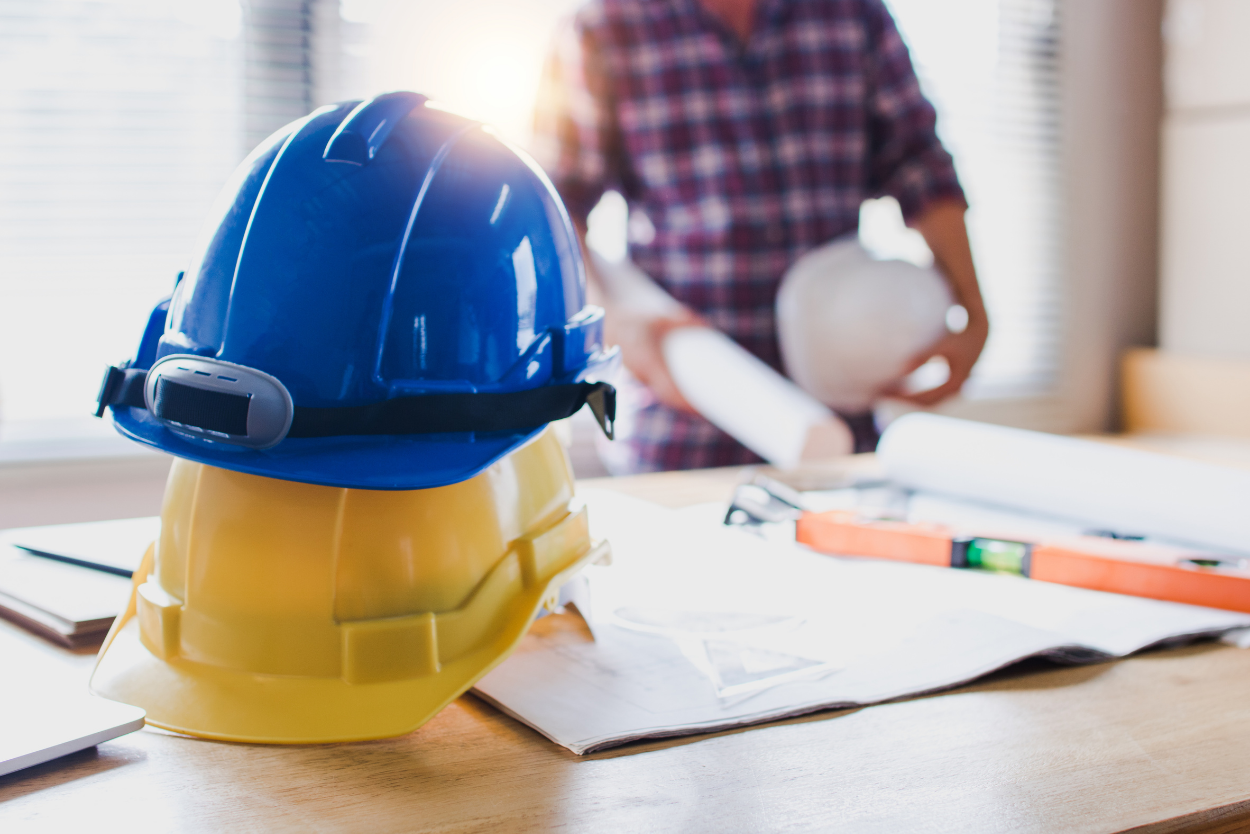
At Claris Design Build, we don't just talk about safety—we live it. With an industry-leading Insurance Safety Modification rate of 0.87, we set the standard for construction safety. Trust us to bring unmatched expertise and commitment to your building projects, ensuring not only superior quality but also the highest safety standards.
Contact us today and let us help you achieve excellence in every aspect of your construction needs!



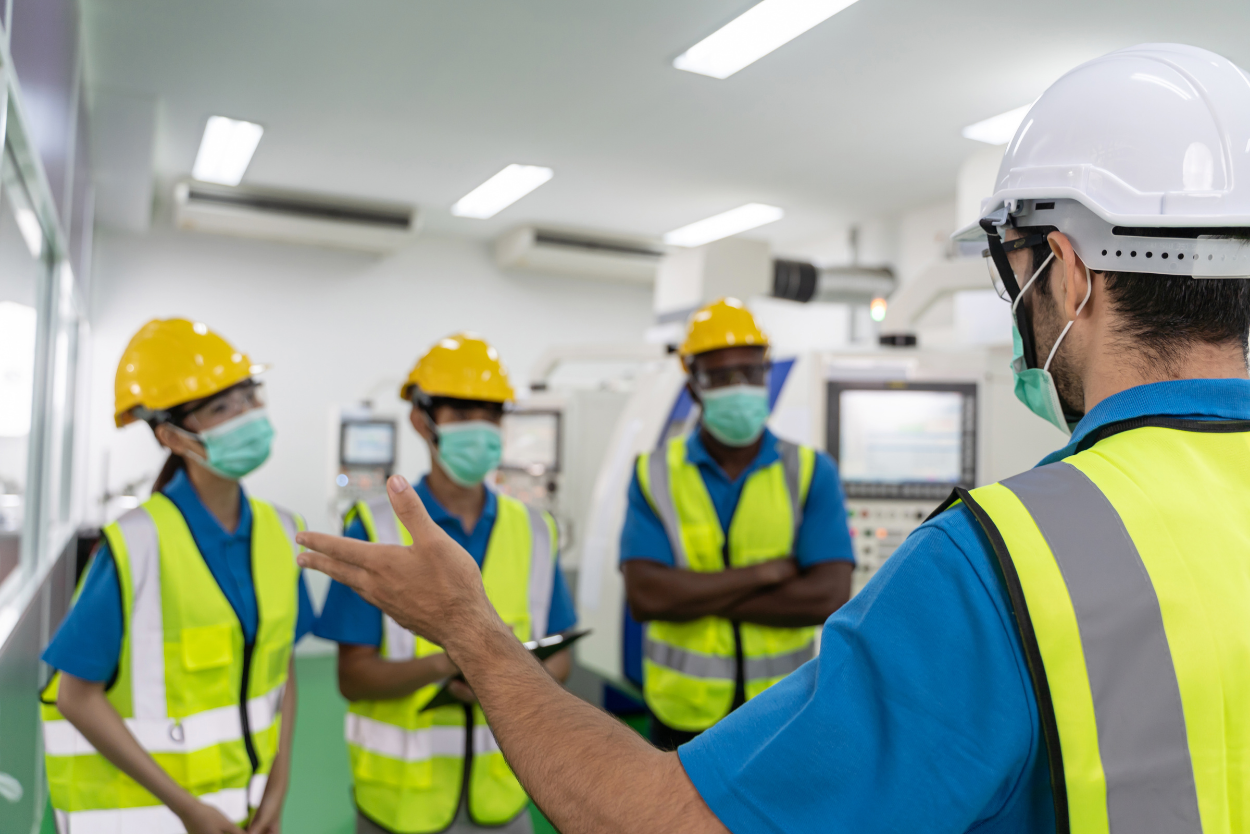
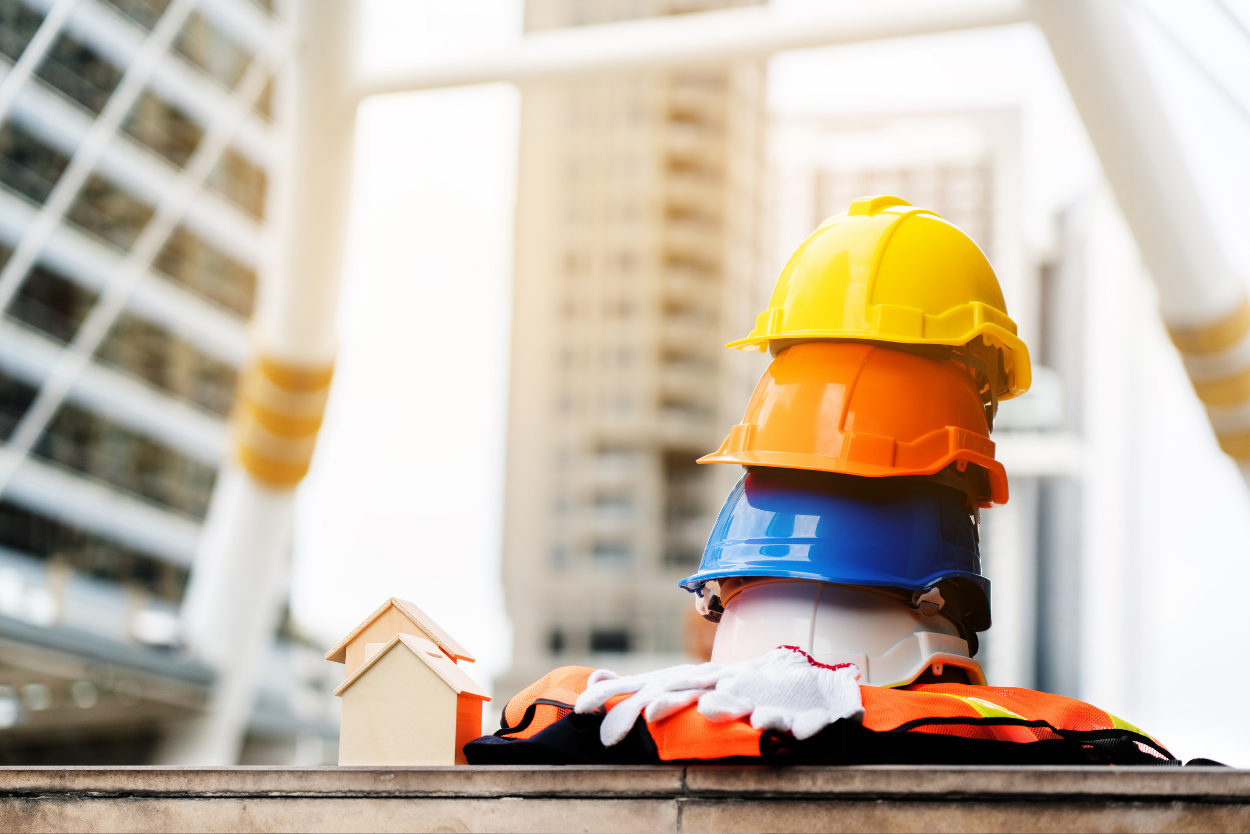
![[2025 UPDATE] Commercial Construction Cost per Square Foot in the US](https://www.clarisdesignbuild.com/wp-content/uploads/2025/04/2025-UPDATE-Commercial-Construction-Cost-per-Square-Foot-in-the-US-3.jpg)
